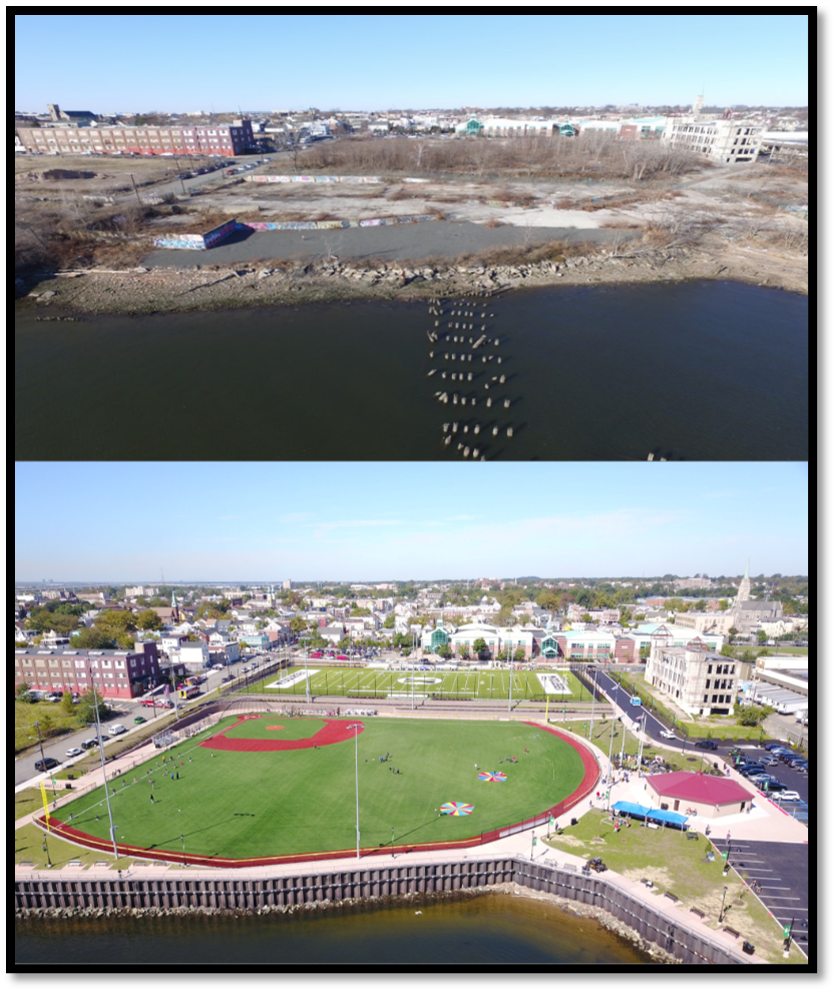SITE REMEDIATION
Case Study: Thomas Mundy Peterson Park
Perth Amboy, Middlesex County
OPPORTUNITY/CHALLENGES
In 2014, there were several brownfield sites located in a ten-acre section of the Arthur Kill waterfront in Perth Amboy, Middlesex County. Investigation of the site revealed that the soil and concrete were contaminated with PCBs left over from their past industrial use, meaning that to develop this site, major remediation efforts were needed.
PARTNERS
The development project was initiated by Middlesex County and was facilitated by the Community Collaborative Initiative, a partnership between DEP and NJEDA which places liaisons into overburdened selected cities. Throughout this effort, the resources of the DEP’s Office of Natural Resource Restoration, Brownfields Development Area, and Green Acres program were leveraged. Additionally, Najarian Associates were instrumental in this project as the acting LSRP.
ACTION
The DEP made the decision to combine the properties from 3 different owners which had been purchased by the county, each in different states of contamination, into one large remediation site requiring only one LSRP. The site remediation process consisted mostly of the removal and disposal of contaminated soils, concrete, and other debris, and occurred in tandem with the redevelopment process, saving the county and their partners time and money.
FUNDING/RESOURCES
This project used a variety of resources from several partners, starting with over $8 million invested by the DEP’s Office of Brownfield and Community Revitalization through three separate HDSRF grants for the site investigation and remediation. Additional funding for the redevelopment and revitalization efforts included $1.35 million from DEP’s Office of Natural Resource Restoration to improve access to the Arthur Kill waterfront, $2.5 million from the Green Acres program for development of a new park, as well as funding from a county trust fund for open space recreation.
RESULTS & BENEFITS
Thomas Mundy Peterson Park officially opened in September for 2021, sporting two new multi-use synthetic-turf field and waterfront access for the community to use, something they had been deprived of for decades. The park also contains a parking lot, comfort stations, and restroom facilities. This project exemplifies the potential that brownfields have for redevelopment, and this remediation and revitalization can be achieved through the leveraging of partners and resources available to us in New Jersey.

Get started on similar project: